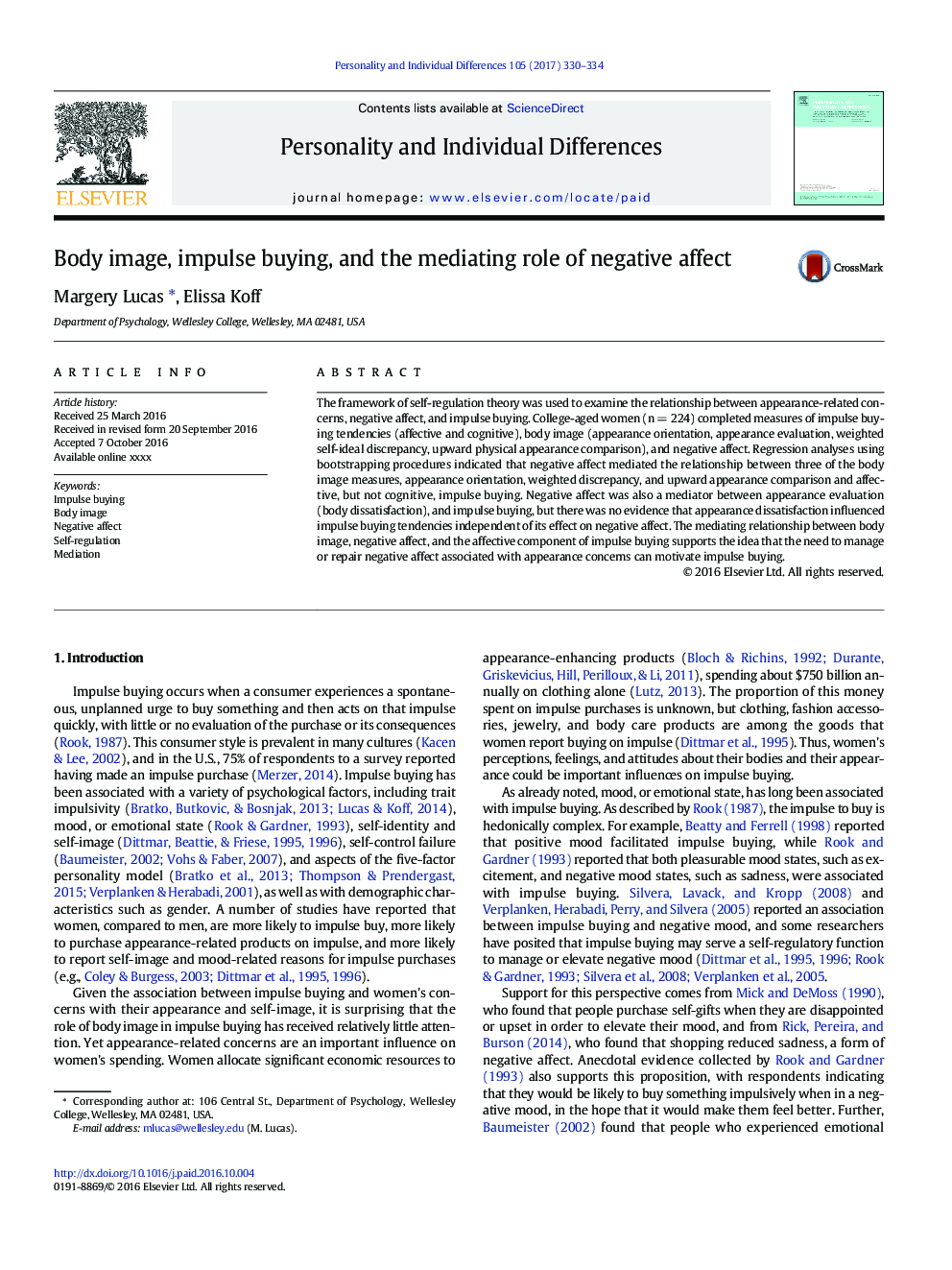| Article ID | Journal | Published Year | Pages | File Type |
|---|---|---|---|---|
| 5036068 | Personality and Individual Differences | 2017 | 5 Pages |
Abstract
The framework of self-regulation theory was used to examine the relationship between appearance-related concerns, negative affect, and impulse buying. College-aged women (n = 224) completed measures of impulse buying tendencies (affective and cognitive), body image (appearance orientation, appearance evaluation, weighted self-ideal discrepancy, upward physical appearance comparison), and negative affect. Regression analyses using bootstrapping procedures indicated that negative affect mediated the relationship between three of the body image measures, appearance orientation, weighted discrepancy, and upward appearance comparison and affective, but not cognitive, impulse buying. Negative affect was also a mediator between appearance evaluation (body dissatisfaction), and impulse buying, but there was no evidence that appearance dissatisfaction influenced impulse buying tendencies independent of its effect on negative affect. The mediating relationship between body image, negative affect, and the affective component of impulse buying supports the idea that the need to manage or repair negative affect associated with appearance concerns can motivate impulse buying.
Related Topics
Life Sciences
Neuroscience
Behavioral Neuroscience
Authors
Margery Lucas, Elissa Koff,
